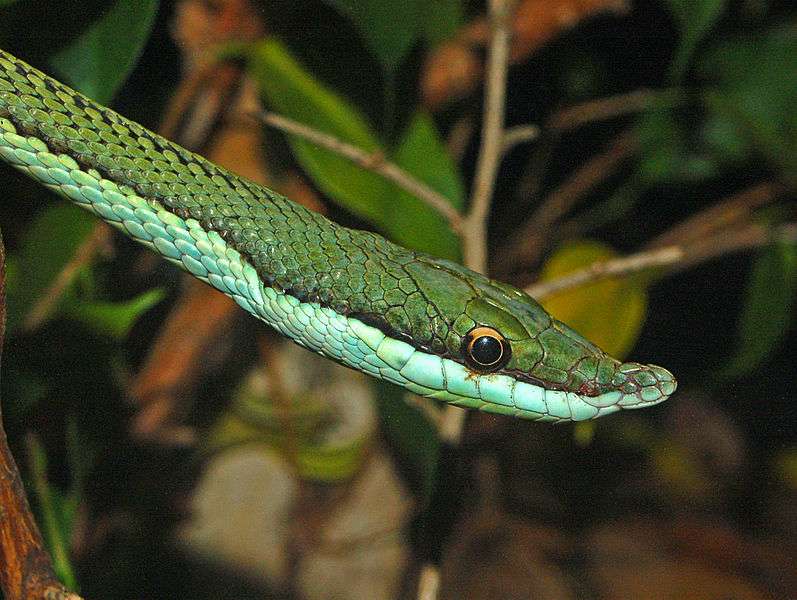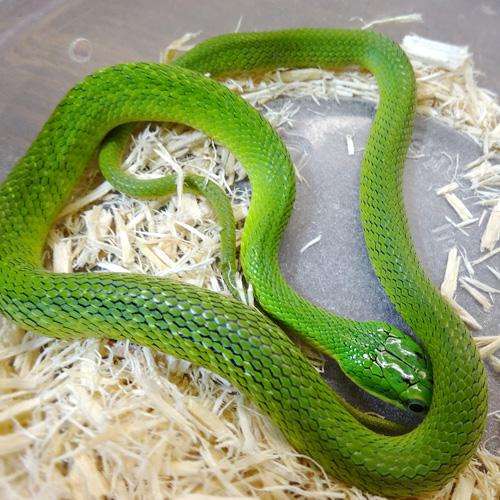
Description:
Scientific name: Agkistrodon contortrix
Life span: Around 18 years
Agkistrodon contortrix, sometimes referred to as the copperhead, is a type of poisonous pit viper. The head of this snake is large and separate from the neck, and the body is relatively thick. The skin is covered in a sequence of 10–18 crossbands and is a light tan to pinkish tan tint that darkens towards the foreline. The crossbands’ centers range from light tan to pinkish-tan to pale brown, but they get darker as they get closer to the margins. On the flanks, near to the belly, there are a number of dark brown patches that are the largest and darkest in the intervals between the crossbands. One to three (often two) brown crossbands are seen at the base of the tail, followed by a grey region.

Native Region/Habitat
North America is home to copperheads, and the United States is part of their range. These snakes live in a range of environments. They prefer mixed woods and deciduous forests throughout the majority of North America. Although they are frequently located near ledges and outcroppings of rock, they can also be found in low-lying, swampy areas.
Behavior:
Although they prefer the ground, copperheads can also climb trees to eat cicadas. These snakes are solitary hunters, but in the winter, they hibernate in burrows, caverns, or cracks in limestone, frequently alongside Timber rattlesnakes and Black rat snakes. When lazing in the sun, drinking, eating, and during the breeding season, they can often be seen in groups close to den locations. Copperheads are nocturnal throughout the hot summer months but become nocturnal in the spring and fall. Being ambush predators, these snakes hunt by watching for their victim to show up.
Yet, Copperheads vigorously pursue their prey when hunting insects. Copperheads like to stay away from people and leave the region unharmed. They frequently “freeze” rather than flee, most likely as a result of their camouflage. They can be nearly invisible when laying on dead leaves or red clay. Even when approached closely, they frequently remain motionless, and they typically only strike when physically contacted. Copperheads will vibrate their tail when under threat.
Care As a pet/In captivity:
Make sure their terrarium is at least 30 gallons, and 50 gallons is advised if you are housing couples.
For a copperhead to exhibit its normal habits, their enclosure must have the following four modifications:
- There should be hiding places like logs and boxes where they can hide if they feel threatened.
- The majority of copperheads often spend their days basking, hence a location for this should be supplied (preferably a specific rock).
- A water dish that can be submerged should be present and changed every day.
- Due to their propensity for escaping, it is crucial that the terrarium have a tight-fitting lid.
The ideal heat source for their enclosure, which needs to be below 85 degrees, is a basking lamp pointed at a single basking rock (do not use heat rocks; they are damaging). The optimum bulb for the basking lamp is one that uses mercury vapour. Between 92 and 95 degrees should be the temperature of the basking area. The enclosure should be between 67 and 70 degrees at night, with the basking lamp off. Being cold-blooded creatures, copperheads regulate their body temperature through interacting with their surroundings.
They typically eat once every two weeks while in captivity. A Copperhead will strike its prey and suffocate it with poison to kill it. They inject the victim with venom and then hold it in their jaws till it passes away before consuming it whole. This pet will flourish in captivity on a diet of defrosted mice.
Table





